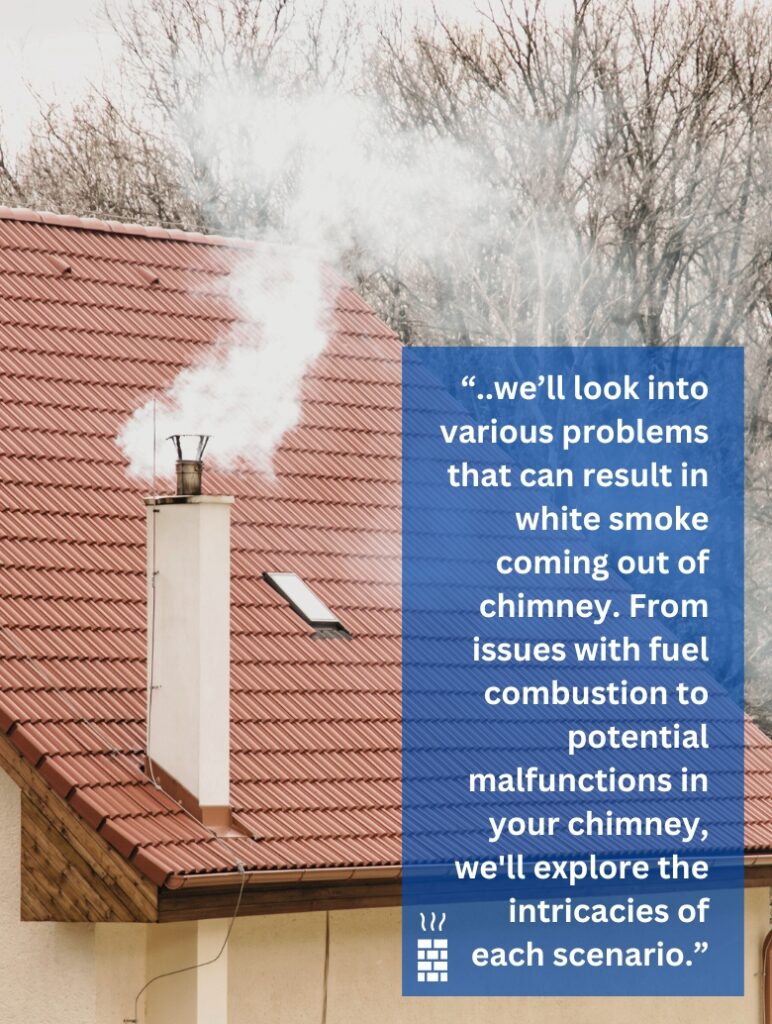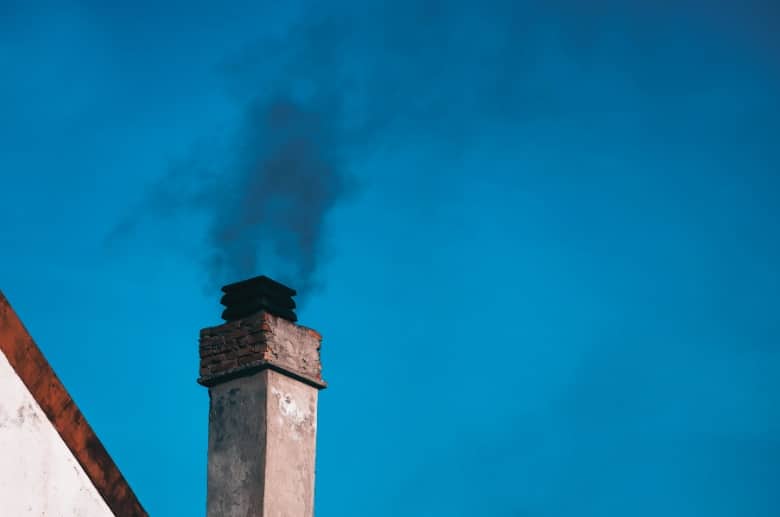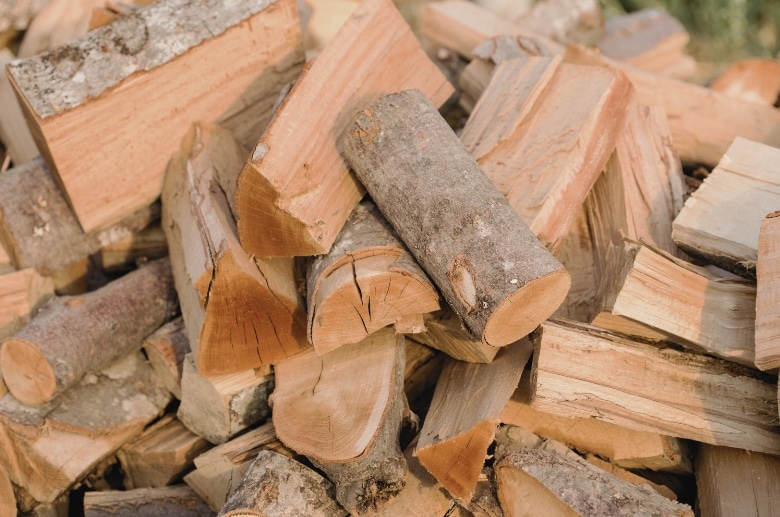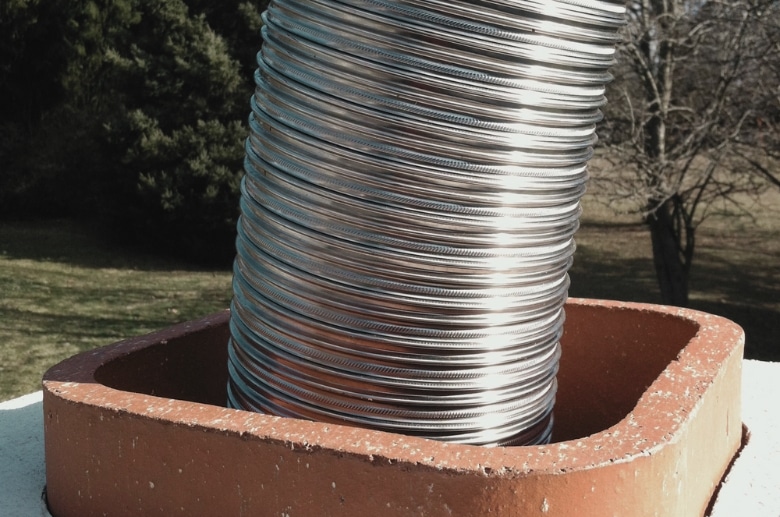“Why is there white smoke coming out of my chimney?” This question may have crossed your mind, and we’re here to shed light on the common issues that lead to this phenomenon.
Whether you have a wood-burning fireplace, a gas furnace, or another heating system, understanding the root causes is the first step towards resolving the issue and ensuring the warmth and safety of your home.
Throughout this guide, we’ll look into various problems that can result in white smoke coming out of chimney. From issues with fuel combustion to potential malfunctions in your chimney, we’ll explore the intricacies of each scenario.
No need to remain in the dark! We’ll shed light on each cause and offer clear and actionable steps to get your chimney breathing easy again. Let’s get started.

Throughout this guide, we’ll look into various problems that can result in white smoke coming out of chimney. From issues with fuel combustion to potential malfunctions in your chimney, we’ll explore the intricacies of each scenario.
No need to remain in the dark! We’ll shed light on each cause and offer clear and actionable steps to get your chimney breathing easy again. Let’s get started.
——
Do You Need to Hire Chimney & Fireplace Expert?
Get free quotes from qualified experts near you. No commitment required!
——
Is It Normal for Smoke to Come Out of Chimney?
A small amount of smoke, especially white smoke, is normal when starting a fire or during its early stages. However, the color, density, and smell of the smoke can reveal important clues about your chimney’s health.

Here’s how you can identify the type of smoke:
- White smoke: During the initial start-up, the release of water vapor is a normal occurrence and nothing to be concerned about.
- Black smoke: Thick, billowing black smoke indicates inefficient burning, often due to damp wood, poor airflow, or a blocked chimney.
- Smell: A pleasant wood-burning scent is expected, but acrid or chemical smells warrant attention.
Normal vs. Abnormal Chimney Smoke
Here are some of the characteristics of normal white smoke.
Normal White Smoke:
- Often seen during the initial fire start-up as moisture in the wood and flue evaporates.
- It appears thin and wispy and dissipates quickly.
- It has a faint, pleasant wood-burning smell.
Black vs. White Smoke:
| Type of Smoke | Characteristics |
| Black | This may indicate incomplete combustion, inefficient burning, or potential chimney issues that should be addressed immediately. |
| Abnormal White Smoke | Thick, persistent white smoke: May indicate smoldering fire, poor draft, or incomplete combustion due to fuel or airflow issues. White smoke with a chemical smell: This might suggest burning treated wood, plastics, or other inappropriate materials. This can release harmful toxins and should be stopped immediately. |
If in doubt, prioritize safety:
- Open windows for ventilation.
- Extinguish the fire if smoke worsens or enters the house.
- Call a chimney sweep or another qualified professional for inspection.
What To Do When There’s White Smoke Coming Out of Chimney
Here are the immediate steps you should take if you notice persistent white smoke coming out of your chimney.
Adjust Airflow and Dampers
Optimizing airflow and damper settings plays a crucial role in preventing smoke. Aim for a slight draft, neither sluggish nor excessive. Use the flue damper to regulate exhaust flow – partially open in winter, slightly closed in summer.
It is recommended to use a manometer to monitor the pressure. Optimal values are between -0.02 and +0.04 Pa. Balancing ventilation ensures complete combustion, which minimizes smoke output.
Burn Seasoned Firewood

If you see smoke in your house or coming out of the chimney, it could be a sign of inefficient burning. This can be caused by damp firewood. To ensure a clear and heat-filled plume, it is recommended to choose seasoned wood.
This means wood that has been dried for at least six months, letting moisture levels drop below 20%. Seasoned wood ignites easier, burns hotter, and produces less smoke, minimizing that telltale white cloud.
Additionally, store your firewood in a covered, well-ventilated area off the ground, and prioritize logs that crack when struck together – a testament to their dryness.
Perform Regular Chimney Maintenance
Performing regular chimney maintenance is another effective way to prevent white smoke from emerging from your chimney.
It’s important to plan for annual chimney sweeps and inspections by a qualified professional, especially before the peak burning season begins. For those who use their fireplace frequently, bi-monthly DIY cleanings are also advisable.
When it comes to cleaning, you have the option to do it yourself for basic maintenance. This involves using a chimney brush and soot remover. However, more complex issues such as extensive creosote buildup, structural cracks, or the presence of animal nests necessitate professional intervention.
If you decide on a DIY approach, it’s essential to invest in a high-quality chimney brush, protective gear like gloves and goggles, a tarp to catch debris, and a soot remover, making sure to follow all instructions carefully.
In terms of costs, DIY cleaning tools typically range from $50 to $100, whereas professional chimney sweeps usually start at $150 to $450. It’s worth considering the time and effort saved by hiring professionals, especially for more intricate cleaning or repair jobs.
For thorough chimney maintenance, including cleaning, flue inspections, repairs, and animal removal, don’t hesitate to call in the professionals. Investing in their services can enhance your safety and help prevent future chimney problems.
Install a Chimney Liner

Chimney liners, typically made of stainless steel, aluminum, or clay tiles, serve to contain and guide the byproducts of combustion safely out of your home.
Besides ensuring structural integrity, chimney liners also offer improved insulation and increased chimney durability.
——
Do You Need to Hire Chimney & Fireplace Expert?
Get free quotes from qualified experts near you. No commitment required!
——
Considerations for Choosing and Installing an Appropriate Liner
Material Selection
- Stainless Steel: Durable and corrosion-resistant, stainless steel liners are a popular choice. They offer excellent protection against acidic byproducts and are suitable for various fuel types.
- Aluminum: Lightweight and cost-effective, aluminum liners are suitable for certain heating systems. However, they may not be as durable as stainless steel.
Size and Diameter
Essential for optimal performance. The liner must match the heating appliance’s size for efficient venting.
Insulation
Some liners come with insulation, which helps maintain the temperature of the flue gases, preventing condensation. This is particularly important in preventing creosote buildup and corrosion.
Professional Installation
While some homeowners may consider a DIY approach, professional installation is highly recommended. Certified chimney sweeps have the expertise to ensure proper sizing, alignment, and sealing, reducing the risk of leaks and improving safety.
Cost of Installation
The average cost of installing a chimney liner varies based on factors such as the type of liner, size, and complexity of the installation. On average, homeowners can expect to invest between $500 to $2,500, with stainless steel liners generally being on the higher end of the spectrum.
Common Causes of White Smoke Coming Out of Chimney
Let’s dive into the reasons behind the mysterious white smoke coming from your chimney.
1. Inefficient Combustion
When combustion lacks a proper oxygen supply or is just initiated, it produces white smoke. Factors influencing combustion efficiency, such as fuel type and moisture content, contribute to this issue.
Additionally, the quality of combustion plays a crucial role. An insufficient oxygen supply results in white smoke initially transforming into cleaner, blue smoke as the fire achieves a balanced mix of heat, oxygen, and fuel.
2. Cool Chimney Temperature
Low chimney temperatures can lead to condensation within the flue, resulting in the emission of white smoke. This occurs when the warm combustion gases cool down too quickly.
To address this issue, consider using higher-efficiency appliances, insulating the chimney, or ensuring proper drafting to maintain optimal operating temperatures.
3. Pluming Issues
Pluming occurs when white smoke exits the chimney due to poorly angled flue vents. This misalignment can cause chimney smoke to plume in front of windows or even blow back into the home, indicating ventilation problems that need prompt attention.
4. Excessive Creosote Buildup
Creosote buildup in a chimney can result in white smoke emissions due to incomplete combustion. As creosote accumulates, it obstructs proper chimney airflow, causing inefficient burning of wood.
To prevent this, regular chimney inspections, proper wood-burning practices, and professional cleaning are essential measures to minimize creosote buildup and ensure a clean, efficient chimney.
5. Problems With Oil Burner
White smoke from the chimney may indicate issues with the oil burner. A sign of a mixture problem within the burner can lead to incomplete combustion, resulting in visible white smoke.
Also, excessive levels of oxygen within the combustion chamber of the stove can contribute to inefficient fuel burning, generating white smoke as a byproduct.
6. Blocked Chimney or Flue
White smoke often points to a blocked chimney or flue, hindering proper airflow and combustion. Debris like fallen bricks, bird nests, or excessive creosote buildup can restrict the passage.
To identify the blockage, use a flashlight and mirror to peer up the chimney. Alternatively, a professional chimney sweep can perform a thorough inspection and cleaning.
7. Type of Fuel and Fire Management
One of the primary factors influencing the color of smoke emanating from your chimney is the type of fuel being used and how the fire is managed. Allow us to elaborate.
- Charcoal or Wood: When burning charcoal or wood, it’s not uncommon to observe white smoke during the initial stages of combustion. This phenomenon is attributed to the release of volatile components present in the fuel, including oils, tar, and water.
- Freshly Lit Fire: When a fire is freshly lit, especially with charcoal or wood, the combustion process involves not only burning the actual material but also releasing the moisture content within. This initial phase can result in the production of white smoke as steam combines with other volatile substances.
Are There Safety Concerns Associated With White Smoke?
While white smoke might seem less menacing than its black counterpart, it’s crucial to understand that safety concerns can still arise.
Remember that if anyone inhales any smoke, white or black, they should seek immediate medical attention. Smoke inhalation can cause irritation, respiratory distress, and even carbon monoxide poisoning, which requires prompt medical intervention.
That’s not all you can get through inhaling smoke! Creosote exposure can have adverse health effects:
- Eye, nose, and throat irritation: This is the most common immediate effect and can be quite an unpleasant experience.
- Respiratory problems: Long-term exposure can lead to bronchitis, asthma, and even lung cancer.
The saddest part is the use of kerosene or solid fuels like wood, charcoal, or coal for household energy needs contributes to approximately 11% of adult lung cancer deaths, stemming from exposure to carcinogens in household air pollution.
Hence, the significance of professional, routine maintenance and cleaning services cannot be overstated. It ensures the well-being of you and your family while optimizing the functionality of your chimney.
——
Do You Need to Hire Chimney & Fireplace Expert?
Get free quotes from qualified experts near you. No commitment required!
——
How Will I Know If My Chimney Is Safe to Use?
You can determine if your chimney is safe to use by addressing two key factors:
- Persistent White Smoke Issues: If you consistently observe white smoke coming from your chimney, especially beyond the initial stages of a fire, it may indicate underlying issues. Seek professional inspection to identify and address potential problems affecting the safe operation of your chimney.
- Selecting Qualified Technicians for Chimney Inspections and Repairs: Ensure that you engage qualified technicians for regular chimney inspections and repairs. Professionals can assess the condition of your chimney, identify safety concerns, and perform necessary maintenance to keep it in optimal working order. Regular inspections by qualified experts are crucial for ensuring the safety and efficiency of your chimney.
Conclusion
Understanding the source and solutions to white smoke coming out of chimneys is pivotal in maintaining a safe and efficient home environment. Some of the causes include the type of fuel used, poor fire management, and potential issues like inadequate ventilation or malfunctioning heating systems.
Proactive measures are essential to address these issues effectively. Choose dry, seasoned wood, ensure proper ventilation, and invest in a quality chimney liner to minimize white smoke concerns.
Additionally, regular professional inspections and cleaning services play a crucial role in preventing creosote buildup and other potential hazards.






